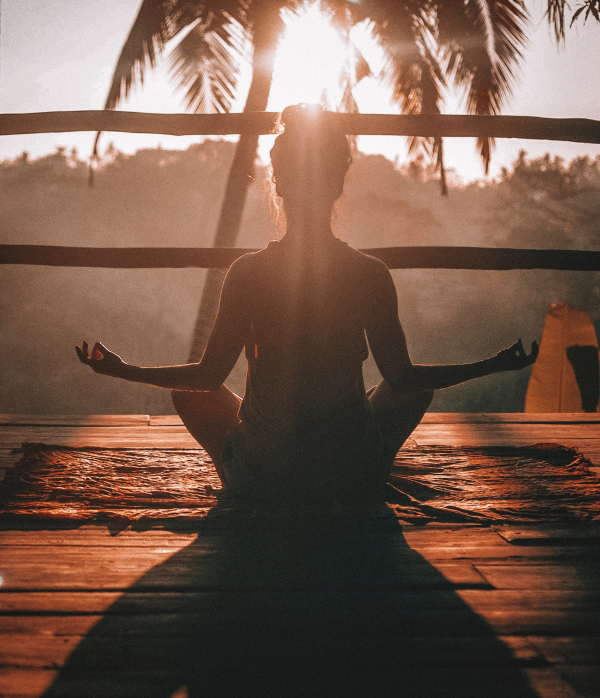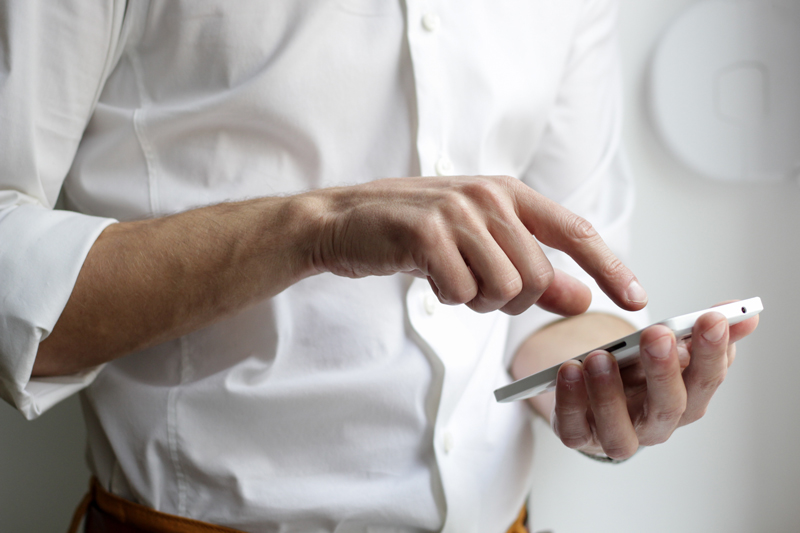Mindfulness is a powerful tool to help you ground yourself, gain perspective and relax. In this article we'll cover what mindfulness is all about, techniques you can employ today, benefits, history, popular apps for guided meditation and much more. Click on the section links below to jump to a topic, or read on for our full guide on mindfulness.
- Quick facts
- What is mindfulness?
- Preparation for practice
- Mindfulness techniques
- How does mindfulness work?
- Brief history of mindfulness
- Benefits of mindfulness
- What to expect from a corporate mindfulness session
- Example session
- Mindfulness Apps & Resources
Quick facts
- Common techniques: mindful breathing, mental body scan, objectively observing emotions and physical sensations
- Personal sessions can last for a just few moments to regain calm in the day
- Sense corporate mindfulness classes are in one-hour sessions and the hour can be split into 2 x 30 minute sessions with around 15 people per session
- Independent courses of mindfulness sessions will typically last for 6 to 8 weeks
- There are lots of free apps available to help you enjoy mindfulness day to day
![mindfulness someone meditating on a sand dune]() What is mindfulness?
What is mindfulness?
Mindfulness is a type of meditation that revolves around consciously observing the way we feel and experience the world, reflecting on our physical sensations, thoughts and the world around us - without trying to change them. This can then help us to reconnect with our bodies and the world around us, gain awareness of our thoughts and the present moment, and see things more clearly and positively.
It has been defined by a previous director at the Oxford Mindfulness Centre as 'knowing directly what is going on inside and outside ourselves, moment by moment'. Common exercises include focusing on the sensation of breathing, listening to noises around us, mindful eating and drinking, paying close attention to tensions within the body, and looking at our thoughts and the way we think.
Mindfulness is ever growing in popularity and is now being used in many areas of life from sports professionals to prisoners. Mindfulness techniques have also become closely integrated with cognitive and behavioural therapies for its beneficial effects.
Mindfulness is easy to use and learn, it can be used in everyday life and situations. It focuses your attention on what is happening in the present moment: to what's happening in your body, to your mind and or your surroundings. Mindfulness can help to calm the mind and get greater enjoyment from life and once people see the benefits they find they enjoy these little pockets of calm throughout their day. Mindfulness describes a way of approaching our thoughts and feelings in a non-judgemental way so that we can become more aware of our reactions and maybe choose to take a different view in the future.
A huge part of mindfulness is learning to accept our thoughts and surroundings as they are in the present - this helps us live better in the present moment and be more connected to reality as it really is. For example, taking a walk and noticing what is surrounding you instead of concentrating on making a to-do list or thinking about what is next on the agenda can be a powerful way of staying present.![]()
Preparation for practice
- Find the right time and place
- Body position: in a comfortable position either sitting with back supported, or on the floor or lying flat.
- Loosen clothing so you feel unrestricted.
- Focus the mind on the present through breathing or visualising a place very clearly in your mind
Mindfulness techniques
Mindfulness meditations are usually guided, but once you are more acquainted with some of the techniques, you can incorporate mindfulness into your daily routine very easily. Below are some examples of exercises that a practitioner may include in their sessions that you can utilise in your day-to-day.
Finding the time to be mindful doesn’t have to be a chore.
It takes seconds to change your state of mind.
Find time for your mind to be in the present, even if it’s just a few minutes during your lunch break.
Relaxation Techniques – Each person is different and learning the right relaxation techniques can be very beneficial. Some relaxation techniques include:
- Relaxation response - responding to a stressful situation by meditating
- Conscience muscle relaxation
- Physical activity followed by relaxation, such as taking a run and then mindfully stretching afterwards
Visualisations – Learning to visualise can help to enhanced performance, calm the mind, or change habits. The art of visualisation is a practised discipline by way of recreating images or scenarios in the mind for a particular purpose.
Mindful breathing – Deep breathing and relaxation breathing techniques can vary greatly depending on the activity. It is generally carried out before mindfulness and meditation and can bring calm, balance and harmony to the participant. Your practitioner will guide you through the sequence, however for relaxation it is typical to breathe in through the nostrils for 4/6 counts and breathe out for 6/8. The breath should be natural and not forced and you should not feel dizzy at any point.
Stretches – Learn to take breaks and apply stretches to increase blood flow and reduce tension in muscles.
Thought pattern behaviour – Learning and deciphering your thought patterns can show you areas of negative and positive perceptions. Analysing predispositions can help you to see areas where change might bring about a healthier outlook on certain situations.
Mindful eating and drinking - Another useful mindfulness exercise is to think about your food or drink, and your experience of it. Consider what it looks like, feels like to hold, feels like on the tongue, feels going down your throat, the sensation on your lips, how it tastes, and so on. This is a great exercise for food and drinks you really like, and can help you enjoy them even more. ![]()
Example Exercise:
 Quick exercise on being in the present:
Quick exercise on being in the present:
Pick up a raisin and think about it for a minute. Ask yourself, “what do I like or dislike about this raisin?”, touch it, squish it, smell it, think about the taste of it, then eat it. After a minute ask yourself “Did I only think about the raisin?”
Ask yourself: "Did any other thoughts present in my mind other than the raisin?" In most cases the answer will be no.
The object of the exercise is to train the mind on one given task. Concentrating on one task at a time expels less energy and learning to inhibit distractions is a great skill to acquire for staying focused.![]()
How does mindfulness work?
Many studies have shown that giving people the ability to make choices and more autonomy will greatly reduce their levels of stress. Pick up a copy of this book ‘Your Brain at Work’ by David Rock For further in-depth reading.
Practicing mindfulness techniques creates an environment where a person can be fully in control of their thoughts and this can have positive effects on the limbic system. When a person is under stress, their body reacts by releasing hormones such as adrenaline and norepinephrine, this assists the body with the popular “fight-or-flight” response. Your heart rate and breathing raises and blood vessels narrow causing an increase in blood pressure.
Occasional stress is a normal coping mechanism. But stress over long periods may contribute to a range of health problems including:
- Heart problems
- High blood pressure
- High cholesterol
- Headaches
- Sleep disorders and many other symptoms.
In contrast to the stress response, relaxation techniques slow the heart rate, lowers blood pressure, and decreases the levels of stress hormones in the body by activating a part of the nervous system called the parasympathetic nervous system.
In theory applying the regular use of relaxation techniques could offset the negative effects of stress.
1. the quality or state of being conscious or aware of something
2. a mental state achieved by focusing one's awareness on the present moment, while calmly acknowledging and accepting one's feelings, thoughts, and bodily sensations, used as a therapeutic technique
![]()
Brief history of mindfulness
It is believed that the early wisdoms of mindfulness techniques are derived from Buddhist teachings; The Pali term (Sati) meaning ‘correct or right mindfulness’ are fundamental Buddhist practices.
The modern-day phenomenon of mindfulness must be attributed to the American born professor Jon Kabat-Zinn. In 1979 he created the MBSR program (Mindfulness-Based Stress Reduction) at the University of Massachusetts to treat chronically ill people. He also founded the Cambridge Zen Center, Stress Reduction Clinic and the Center for Mindfulness in Medicine. An MIT graduate student he integrated his scientific background with his Buddhist studies which has developed a platform of care offered by medical centers and organisations around the world.
Further reading: Full Catastrophe Living by Jon Kabat-Zinn![]()
Benefits of mindfulness
By allowing time and space in which to practice mindfulness, many people have found the following benefits.
- Increase in calmness and relaxation
- Higher levels of energy and enthusiasm
- Increase of self-confidence and self-acceptance
- Decrease in feelings of stress and anxiety
- Boosts the immune system
- More compassion for yourself and others
![]()
What to expect from a corporate mindfulness session
Initially you will need to think about the practical considerations of implementing mindfulness in a corporate environment. The instructions below are based on a Sense Massage ‘Introduction to Beginner’s Mindfulness Session’
- Number of participants: Approximately 15 per session
- Area required for mindfulness: A large enough area to accommodate 15 participants
- Equipment required: Chairs with back rests for each person and instructor (or yoga mats to lay on the floor), and water for after the session. Alternatively, individuals can bring water bottles.
- Length of class: 30 minutes to one hour
![]()
Example session
The practitioner will usually begin by asking each person to consciously relax the body and the mind, various techniques will be used to either focus on the breath or visualisations. The eyes maybe open or closed. You will be asked to concentrate on the breath and notice how it flows in and out of your body.
Rhythms maybe introduced but nothing should be forced, and you should never feel dizzy. If the mind wanders just gently bring the mind back to focusing on the breath. Moments of quiet will allow you to be in the present and relax, listening to sounds around you, feeling the movement and sounds of your breath. The practitioner may introduce positive affirmations such as ‘you control your thoughts’ whilst keeping you in the present by asking you to focus on the sights, sounds and smells around you.
You should always inform the instructor if you have low blood pressure so that the instructor can best look after you, but do take care when standing after the mindfulness session to avoid becoming light-headed or dizzy.![]()
![Top 10 Mindfulness Apps man downloading a mindfulness app]() Top 10 Mindfulness Apps
Top 10 Mindfulness Apps
- Headspace
- free download (optional subscription £9.99/month), iOS/Android
- Calm
- Free download (optional subscription £9.99/month), iOS/Android
- Stop, Breathe and Think
- Free download (optional subscription £9.99/month), iOS/Android
- Aura
- Free download (optional subscription £7.99/month), iOS/Android
- Smiling Mind
- Free to download, iOS/Android
- Buddhify
- £4.99, iOS/Android
- 10% Happier
- Free to download (optional subscription £5.99/month), Android/iOS
- Insight Timer
- Free, Android/iOS
- MindFi
- Free, Android/iOS
- Mindfulness Daily
- Free, iOS
![]()
Further Notes
The importance of regular practice cannot be under estimated. However, finding the right time and length of session will vary between each person. If possible try to practice daily, and incorporate short regular sessions throughout the day wherever possible. Planning practice into your daily routine doesn't have to be difficult, but it can really bring some amazing beneftis long term, improving happiness and overall wellbeing.
So try these little tricks today


 Top 10 Mindfulness Apps
Top 10 Mindfulness Apps